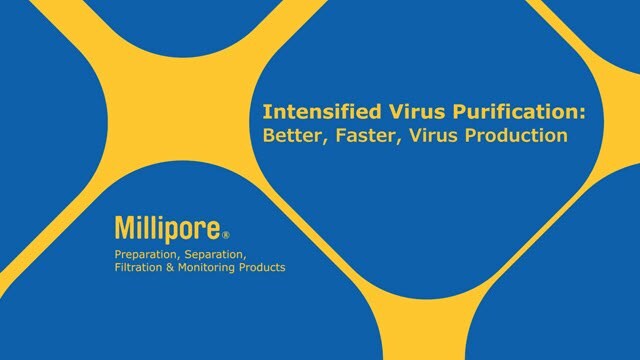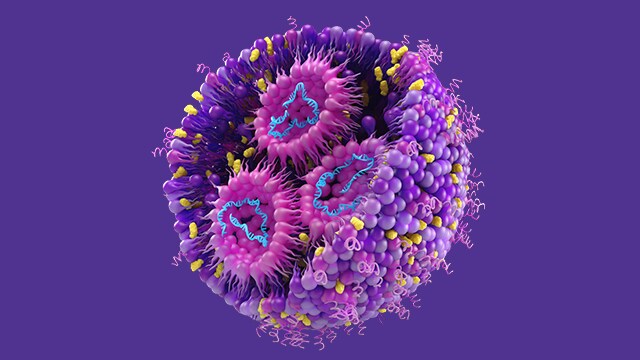疫苗生产:工艺开发和专业知识
疫苗是针对病原体和其他传染病的最具成本效益的卫生干预措施之一,每年可挽救数百万人的生命,同时改善无数其他人的生活质量。但是,全球需求的增长给疫苗生产商带来了严峻的挑战。每种新的病原体或疾病爆发都会增加所需的疫苗类型和制造方法的种类,从而无法建立可提高整体有效性、安全性和经济性的可靠的处理模板。制造商必须开发出可扩展生命科学范围的定制方法,同时以高效和经济的方式加快具有迫切需求的疫苗生产。
从制造角度来看,许多因素都对加快疫苗生产和实现性能目标至关重要。这些因素包括可预测的规模扩大、优化的上游生产率、强大的杂质去除能力、最大限度提高下游回收率、临床应用速度、患者的安全性以及合规性。实现过程的改进可以为以下所述的所有疫苗开发平台带来益处,但该过程需要创新的技术和高水平的应用专业知识。
相关资源
疫苗生物工艺
手册:疫苗生物工艺指南
手册:赋能疫苗生产 - 共克时艰
生物制药应用指南
工作流程:mRNA生产及配制。产品、服务、专业知识
宣传册: 疫苗和病毒疗法的优化解决方案
网络研讨会:来自利用优化的VLP平台加速疫苗开发的全球合作的洞见
网络研讨会:向标准看齐 – mRNA生产的最佳规范
网络研讨会:释放mRNA疫苗和疗法的潜力:生产前景
网络研讨会:基于成本建模的AAV和慢病毒生产工艺开发
网络研讨会: Sf-RVN细胞系和CD培养基平台:VLP和AAV的生产平台
文章:mRNA疫苗和治疗剂的生产策略
活页:Sf-RVN®昆虫细胞系
文章:病毒样颗粒疫苗技术在不断演变的大流行中的作用 - 2021年11月18日 - Emerging BioTalk
灵活生产
白皮书:开发一种更加快速经济的一次性使用腺病毒载体疫苗生产工艺
白皮书:疫情暴发如何促进了一次性疫苗生产的推广
手册:疫苗的灵活生产
网络研讨会:重塑疫苗生产,应对全球健康挑战
生产成本参考信息图
增强纯化(下游)
白皮书:疫苗生产 - 合作攻克疫苗生产工艺挑战
网络研讨会:用于疫苗生产的质粒DNA可放大纯化
电子书:质粒DNA下游工艺
应用说明:用于疫苗生产的质粒DNA可放大纯化
白皮书:利用膜层析法强化病毒纯化下游工艺
网络研讨会:利用膜层析法强化病毒纯化下游工艺
白皮书:口蹄疫病毒最佳开发和纯化的过滤策略
应用说明:用于糖变体分离和COVID-19的Eshmuno CMX
应用说明:优化灭活狂犬病疫苗的下游工艺
应用说明:Benzonase®核酸内切酶添加对萨宾脊髓灰质炎3型病毒纯化的影响
网络研讨会:质粒DNA下游纯化工艺的高效、有效设计
采用Benzonase®核酸内切酶去除病毒生产中的DNA和RNA
白皮书:用于mRNA的质粒DNA下游纯化工艺设计
病毒生产中的病毒安全性
网络研讨会:加快符合监管要求的COVID-19疫苗和疗法开发
网络研讨会:加速推进COVID-19疗法:如何通过简化生物安全策略来助您加速推进临床应用
病毒样微粒(VLP)疫苗
A virus-like particle is a biological nanoparticle consisting of the protective protein shell of a virus without its genome. Mimicking the overall structure of virus particles but lacking infectious genetic material, they represent an appealing model for vaccine development. VLPs can be produced by methods such as mammalian cell culture, insect cell culture, and bacterial and yeast-based systems. While these systems can result in good production yields, purification requires particular attention. The challenge is to develop a scalable upstream process, together with clarification steps and effective purification, while ensuring product quality and reproducibility.
病毒载体疫苗
Viral vectors are a promising platform for vaccine development, inducing cell-mediated immunity against complex diseases such as Ebola, RSV, COVID-19, and other emerging threats. They also offer quick-response potential to repurpose a single virus production template for multiple diseases. However, viral vector processes can pose challenges: improving yield to meet patient demand, maintaining biosafety testing standards for product characterization, potency and safety, as well as streamlining time-consuming production to enhance commercial readiness and accelerate therapy to-market. Manufacturers that overcome these challenges can capitalize on viral vector platform opportunities, while improving the response to global health challenges.

质粒DNA疫苗
Plasmid DNA (pDNA) is an important component of viral vector or vaccines therapies. pDNA is also used as the starting material for mRNA vaccines.
These circular DNA molecules can be used as therapeutic transgene, to code for the viral capsid or as the vaccine itself. DNA vaccines have been approved for use in animals and have been developed against the SARS-CoV-2 virus.

mRNA疫苗
mRNA vaccines are rapidly developing vaccine type and have clearly demonstrated that they are opening a new era in vaccinology. Nucleic acids are based either on DNA formed from a fermentation process and, on messenger RNA (mRNA), which are synthesized in in vitro systems. They induce or promote an immune response against a large number of potential pathogens. These RNA vaccines are growing in popularity because of their quick turnaround time and cost-effective production of large quantities in the event of an outbreak or pandemic. They are also resilient and offer long shelf life under a variety of storage conditions.
偶联多糖疫苗
Conjugated polysaccharide (CPS) vaccines are used globally, particularly in children and the developing world. They offer lifesaving protection against a variety of bacterial infections, including pneumonia, Haemophilus influenzae type b (Hib), and meningitis. Because polysaccharide antigens are not very immunogenic in their native state, chemical conjugation with an immunogenic carrier protein is a critical step. CPS vaccine production requires a complex, multi-step downstream purification process that can pose severe challenges for manufacturers under pressure to maximize yield and reduce costs. To keep CPS vaccines affordable for developing countries, state-of-the-art technologies and process design are essential for fast, cost-effective production that also meets specifications.
类毒素和全菌疫苗
Toxoid and whole bacteria vaccines induce immunity in a similar manner as CPS vaccines, which also utilize inactivated toxoids or bacteria via chemical conjugation. While these platforms are generally regarded as safe, there are process-related challenges with endotoxin removal and, as with any process, the goal of optimizing recovery and yield. Such challenges must be overcome during process development and implementation in order to assure high-quality product.
如要继续阅读,请登录或创建帐户。
暂无帐户?




